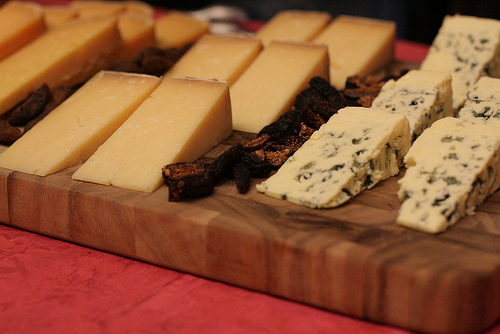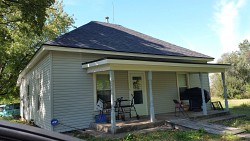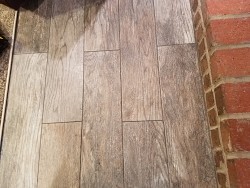Make Your Own Cheese Press!
 Did you know that making your own cheese is actually pretty darn easy? All it involves is heating milk, adding cultures, stirring, setting the mixture for a while in a warm spot, and straining! You then have the option of eating your soft, fresh cheese, or putting it into a cheese press and creating a nice wheel of hard cheese which will develop rich, fascinating flavors as it cures.
Did you know that making your own cheese is actually pretty darn easy? All it involves is heating milk, adding cultures, stirring, setting the mixture for a while in a warm spot, and straining! You then have the option of eating your soft, fresh cheese, or putting it into a cheese press and creating a nice wheel of hard cheese which will develop rich, fascinating flavors as it cures.
People have been making their own cheese for centuries, and there's no reason you can't join in. Here are a few reasons to try your hand at making your own, if you're not totally convinced yet:
1. It's fun. It really is. Cheese is fantastic! You get to play around with milk, order a wide variety of cultures, and learn more about culturing and aging cheese to get desired flavors and textures. You may have some mishaps, but you'll also learn a ton about cheese and how it works.
2. Homemade cheese allows you to control exactly what goes into your cheese and how it's handled, which is a bonus. You can make it with milk from local farmers, if you want, and you have the option of adding herbs, spices, and other flavorings to the cheese should you feel so inclined.
3. When you have (or know) kids, cheesemaking is a great project. There's a lot of science involved, and it can be a fantastic lesson for youngsters interested in cooking, chemistry, and biology, from start to finish. They'll enjoy the process of making the cheese, waiting for it to finish curing, and, of course, eating it.
How to Start
Most people start out with soft cheeses because they're easy to make -- they're basically just a step up from yogurt, another cultured dairy product you can easily make at home. But eventually, you may develop a hankering for hard cheese, and that's when a whole wide world of cultures, curing methods, and cheese presses opens up before you.
You can buy fancy cheesemaking equipment, but it's expensive, and you're not a commercial dairy. You're just as well off using supplies you have around the house, although you may need to purchase a few items like a highly accurate thermometer. And when it comes to cheese presses, you really don't need to bother buying one, although there are lots of perfectly nice models available. Instead, you can try your hand at making your own.
DIY Cheese Press
Here's what you need to know about cheese presses: they work by applying steady, even pressure to exclude moisture so the cheese will firm up in preparation for curing. As the cheese dries out, the microorganisms inside are also getting to work. Depending on which organisms were in the culture you used, your cheese may develop a variety of flavors and textures. After your aging period, you'll have a scrumptious hard cheese, suitable for all kinds of uses.
Thus, for a homemade cheese press, you need something capable of applying even pressure that also has a drainage container for capturing drips. (You don't want your hard cheese sitting in a pool of the moisture that's just been squeezed out!) A good cheese press also needs to be sterilizable and food safe, for obvious reasons.
One issue with many online guides is that they recommend using PVC or other plastics as a mold for the cheese. Not all cheesemakers support this, as there are some concerns about chemical leaching that could pose human health risks. Instead, you can experiment with metal or ceramic molds, as long as they're designed to withstand the pressure of 35 pounds of weight or more.
Use a Food-Grade Container
To set up a cheese press, one of the easiest things to use as a mold is a simple food-grade container, with holes drilled for drainage. Set the container on a block or in a large pot, line with cheesecloth or muslin, pour the curds in, wrap the fabric over them, and top off with a plate, pie plate, or large glass jar. (These are all great materials because they will distribute pressure evenly, and they're nonreactive and food safe.) Stack weights like bricks, heavy books, or even workout weights on top, making sure they're evenly balanced.
Whey will leak out the holes you drilled as the cheese is compressed, but the container will keep the liquid contained so it doesn't end up all over the place. You can add or subtract weight as it rests, depending on the desired level of pressure. Once your hard cheese is sufficiently pressed, you can move it to a cool place for aging, although it may not last long if you have hungry members of the household!
Two Boards Are Even Simpler
For an even simpler press, you can make a cheese sandwich, as it were, with two boards. Wrap your cheese, place it on one board, and then place the other board on top and weight it with bricks. Flip the sandwich partway through to make sure the cheese is pressed evenly. If someone in the house has DIY carpentry skills, you could fancy it up a bit.
One advantage to using a DIY cheese press is that it gives you a chance to see if you like cheesemaking before you commit to expensive supplies. You may find that your press works just fine for your needs, or you could decide that a real cheese press might need to go on your holiday list...and that you need to talk to your Philadelphia contractor about building you a cheese cave.
Katie Marks writes for Networx.com.
Updated August 20, 2018.
Related Articles
Looking for a Pro? Call us (866) 441-6648

Remodeling Average Costs
Remodeling Contractors Experiences

Our Metal Siding Replacement Is Getting Lots Of Compliments

Tile Floor Looks Like Wood, Stands Up To Life With Kids And Dogs



